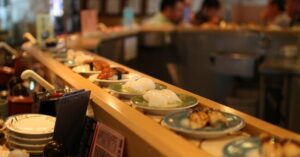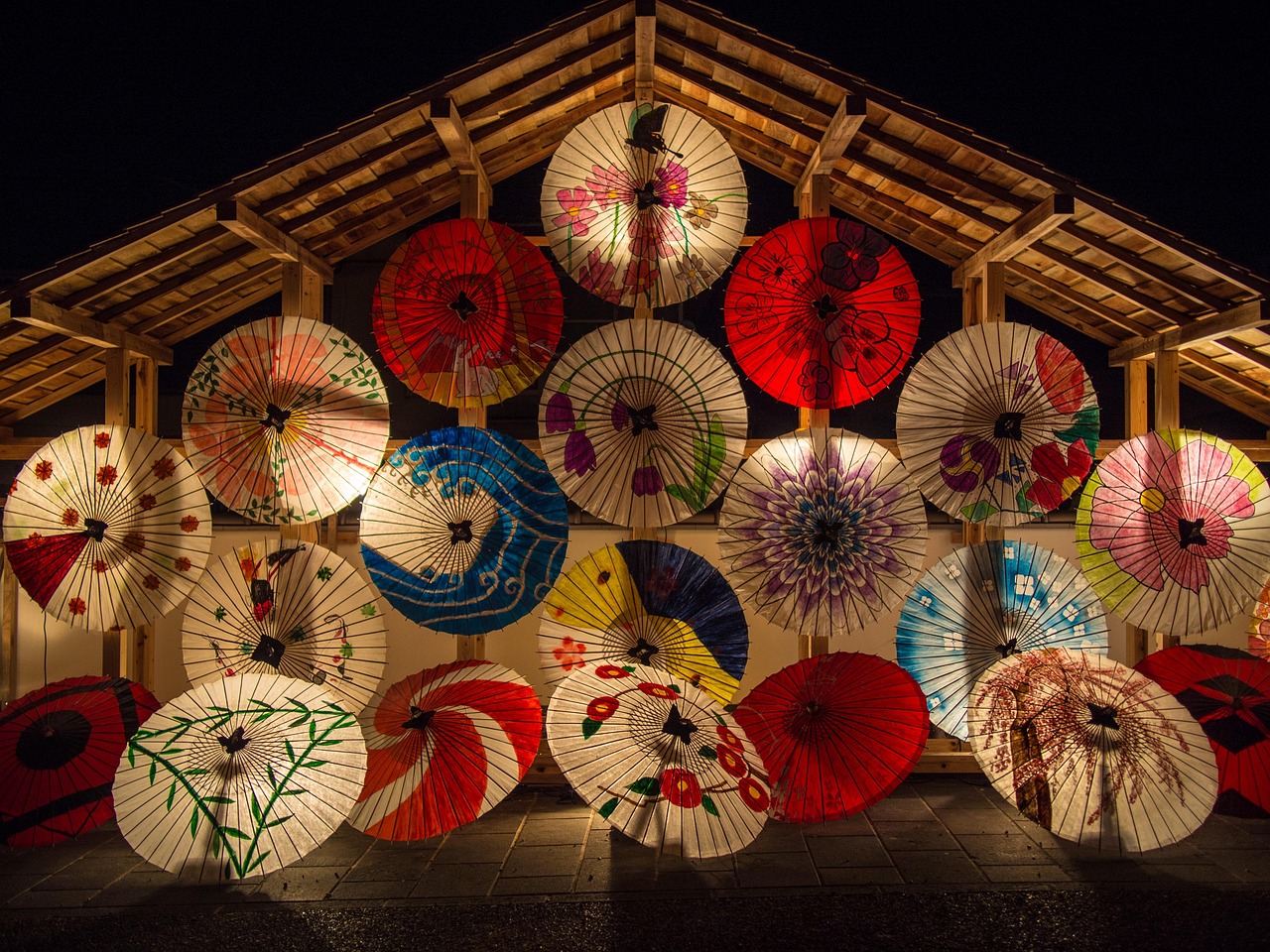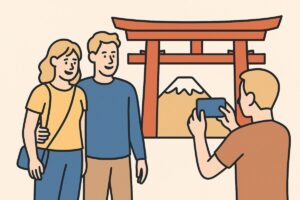From a Local Who’s Lived Here All His Life
As someone born and raised in Japan—and still living here for over 33 years—I’ve seen this country through many seasons, trends, and cultural shifts. And yet, what I love most about Japan has remained the same: it’s a place where tradition and innovation coexist, and where beauty can be found not just in grand temples or famous landmarks, but in the smallest everyday rituals.
If you’re visiting Japan for the first time, you might feel overwhelmed by the sheer number of things to see and do. That’s why I’ve created this list—not as a tourist guide, but as a local sharing what I genuinely believe are the experiences that capture the real spirit of Japan. Some are simple. Some are profound. All are worth your time.
1. 🍣 Try Conveyor Belt Sushi (Kaiten-Zushi)
Growing up in Japan, kaiten-zushi was a treat I looked forward to every month. I still go regularly today. These restaurants are casual, affordable, and incredibly efficient. Plates of sushi glide past on a rotating belt, and you can grab what you want or order directly from a touchscreen. It’s both fun and delicious—and ideal for solo travelers or families alike.
Beyond the novelty, there’s something very Japanese about the system: quiet efficiency, personal choice, and an unspoken etiquette that keeps the experience smooth. Don’t be fooled by the price tag—some of the best fish I’ve had came from a ¥110 plate at a suburban chain.
Go during lunchtime on a weekday to avoid crowds, and don’t miss the side dishes like miso soup, chawanmushi (steamed egg custard), or seasonal desserts.

2. 🛀 Soak in a Real Onsen (Hot Spring)
To truly understand Japanese culture, you need to take your clothes off—literally. That’s how deep-rooted onsen culture is here. Bathing in natural hot spring water isn’t just about hygiene; it’s a ritual of healing, rest, and silence.
When I go to an onsen, I find it’s one of the few places I can completely disconnect. The minerals in the water soothe not just the body but also the mind. And the quiet—nobody speaks loudly in the bath—is a kind of therapy in itself.
Don’t worry about being naked—no one is looking. Everyone is there for the same reason: to relax. First-timers often find it awkward, but within five minutes, that discomfort usually melts away with the steam.
3. 🏮 Wander Through a Local Matsuri (Festival)
Japanese matsuri are some of the most vivid memories from my childhood. The scent of grilled corn, the boom of taiko drums, the sound of laughter echoing between paper lanterns—it’s pure joy.
Festivals vary by region and season, and many have deep spiritual or agricultural roots. Some are grand and famous, like Kyoto’s Gion Matsuri or Tokyo’s Sanja Matsuri. Others are smaller and hyper-local, often run by volunteers from the neighborhood. These are my favorite—the ones where you might catch a spontaneous bon odori dance or win a goldfish at a game stand.
Even if you don’t understand the context, you’ll feel the energy. Go hungry, bring cash, and wear comfortable shoes.
4. 🏠 Stay in a Ryokan (Traditional Japanese Inn)
If you want to slow down and experience true Japanese hospitality (omotenashi), spend a night in a ryokan. These traditional inns offer a peaceful retreat from the busy pace of city life. You’ll sleep on a futon over tatami mats, soak in a communal bath, and enjoy a beautifully prepared multi-course dinner known as kaiseki.
There’s a rhythm to ryokan life: you check in, change into a yukata, drink green tea in your room, then head to the bath before dinner. Afterward, you sit on the veranda or by the hearth, letting the day dissolve in quiet conversation—or silence.
To me, this isn’t just accommodation. It’s a cultural experience that teaches patience, attentiveness, and appreciation for detail.
5. 🥢 Eat at a Konbini (Convenience Store)
Yes, you read that right. Japan’s convenience stores are unlike anywhere else in the world. As someone who’s lived here all his life, I can honestly say I go to a konbini almost every day. Whether it’s for a late-night snack, a quick breakfast, or a perfectly packed lunch, they’re reliable, clean, and full of surprises.
Try an onigiri (rice ball), a bento box, or seasonal items like chestnut desserts in autumn or sakura sweets in spring. You can also find ATMs, chargers, stationery, and even fresh underwear if needed.
Each chain has its strength—7-Eleven has the best sandwiches, FamilyMart is great for hot snacks, and Lawson excels in desserts. Try them all!
6. 🍜 Slurp a Bowl of Authentic Ramen
Ramen in Japan is not fast food—it’s a national obsession. Every region has its own version, and even within the same city, the variety is staggering. Thick pork broth (tonkotsu), clear soy-based soup (shoyu), miso-flavored, or salt-based (shio)—each has its fans and traditions.
Many ramen shops are small, counter-only, and run by one or two people who’ve spent years perfecting their broth and noodles. Eating at these places is an experience in itself: buying a ticket from a vending machine, watching the chef assemble your bowl, slurping (yes, slurping is encouraged) alongside locals.
My personal favorite? A tiny shop in a residential Tokyo backstreet that serves smoky abura soba (soupless oil noodles) with a soft-boiled egg on top. I’ve been going there for over a decade.
7. 🔥 Detox in a Japanese Sauna
In recent years, sauna culture in Japan has undergone a kind of renaissance. The word totonou has become popular—it means something like “to align” or “to reach a state of bliss,” and it refers to the deep satisfaction you feel after rotating between a scorching sauna, an icy cold plunge, and rest.
Unlike Western saunas, Japanese ones often focus on the full cycle. People sit quietly, almost meditatively. Some bring books, others close their eyes. Afterward, you’ll feel lighter, clearer, and strangely energized.
I go to the sauna regularly—not just for health, but to reset mentally. It’s one of the best ways to unwind in a fast-paced city.
8. ⛩️ Do a Morning Visit at a Quiet Temple or Shrine
Temples and shrines are everywhere in Japan, but most visitors see them in the middle of the day when they’re crowded with tourists. Want to really feel their power? Go early—before 8am.
The air is cooler, the streets are quiet, and even the sounds feel softer. You might see a monk sweeping leaves or locals stopping by on their way to work. It’s the Japan I grew up with—disciplined, serene, spiritual.
Walk slowly, breathe deeply, and listen. Whether you believe in anything or not, there’s a sense of peace in these sacred spaces that speaks without words.
9. 🎨 Visit a TeamLab or Digital Art Museum
Japan may be steeped in tradition, but it also pushes boundaries in technology and creativity. Nothing represents that better than a visit to teamLab Planets or teamLab Borderless. These immersive digital art museums turn you into part of the artwork—walking through water, touching light, and triggering sound with your movement.
Even after multiple visits, I still find it magical. And it’s not just for Instagram—it’s genuinely moving. For many visitors, it becomes a highlight of the trip.
Make sure to book early, wear clothes that can get a little wet, and bring an open mind.
10. 🍣 Treat Yourself to High-End Sushi at a Real Sushi Bar
You’ve tried conveyor belt sushi, now go one step further. Dining at a real sushi bar—the kind with just 8 seats, a quiet chef behind the counter, and an omakase menu—is like watching a performance.
Each piece is served one by one, timed perfectly. The chef may tell you the story of the fish, where it was caught, how it’s aged. It’s not just food—it’s philosophy.
I don’t go often (it’s expensive!), but when I do, it feels like a ceremony. A reminder of how much care and respect can be placed into something as simple as a slice of fish on rice.
✨ Final Thoughts from a Local
Japan is not just a place to visit—it’s a place to feel. The beauty of this country lies in the details: the way chopsticks are placed on the table, the sound of cicadas in summer, the scent of tatami mats, the silence between train announcements.
If you rush from one tourist spot to another, you might miss all that. But if you take your time—sit in a park, watch people walk by, buy a steamed bun from a local bakery—you’ll begin to see the Japan I know. The one I grew up with. The one I still love today.
I hope you enjoy your journey here.
And if this is your first visit—it probably won’t be your last.









Comments